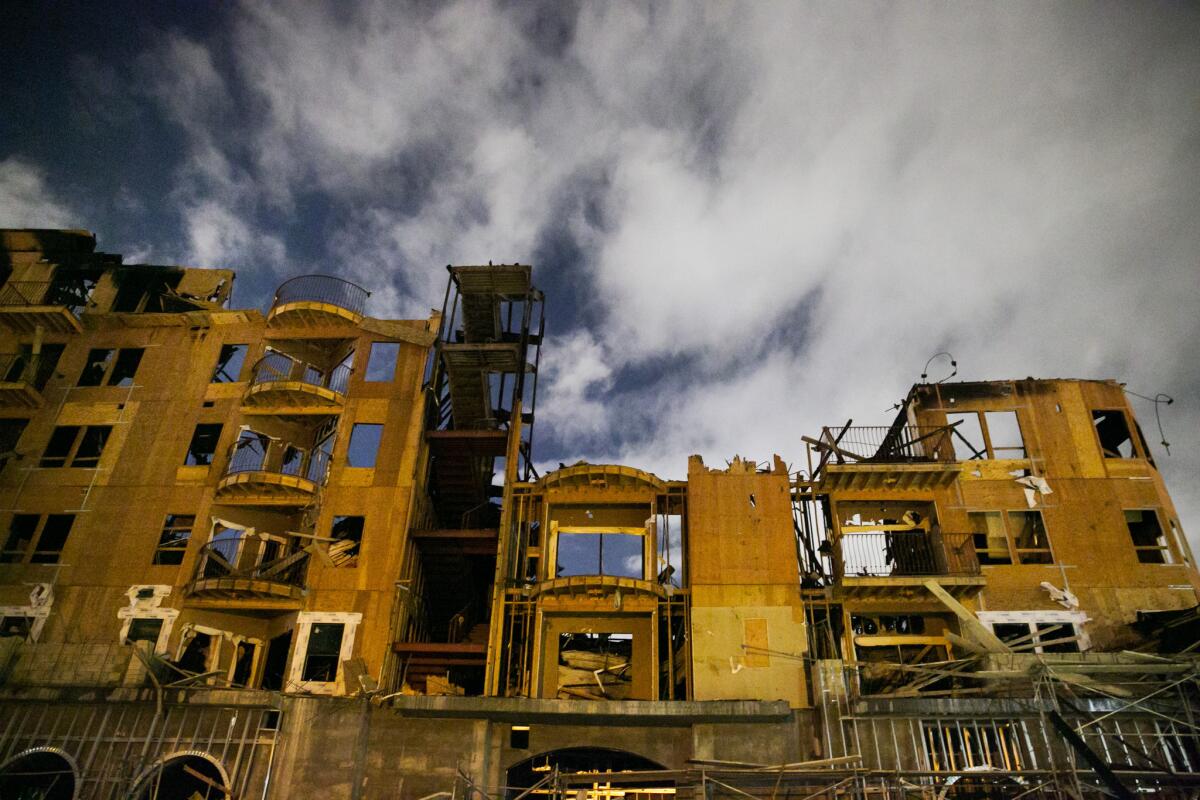Da Vinci fire follow-up: Good urbanism not just architecture and bars

- Share via
Federal investigators have concluded that the massive downtown Los Angeles fire that consumed much of the Da Vinci apartment complex was arson, as The Times reported earlier this week. Which means that the Da Vinci and its developer, G.H. Palmer Associates, will continue to generate headlines as the investigation is carried out.
Already, the buildings have kindled all kinds of debate related to their design and general disconnect from the greater urban fabric. Their inhospitable, faux Italianate street-level facades have been critiqued in the pages of Los Angeles Magazine, on the airwaves of KPCC and by readers of the L.A Times. The week of the fire, I wrote a story about how the attention on the blaze provided an opportunity for Angelenos to rethink the types of projects rubber stamped by our city planners. As so many Times readers made clear, there is a hunger for a newer style of mixed-used design that would take human-scale street life into greater consideration. But it’s not a simple issue.
Reader Dan Silver, an L.A. native who lives in downtown, emailed me in the days after my story ran. He raises another interesting point about the nature of development in downtown L.A.:
I do want to share a different perspective on the “mixed use” mania so prevalent in the “urbanist” community. Downtown’s mixed use is predominantly that of an entertainment district, with noxious digital signs in South Park and a succession of repetitive bars and taverns up and down the historic core. An alcohol-driven economy may be urban but not urbane. Downtown as yet offers little of the high quality urban living found in other major downtowns, though small neighborhood-serving businesses are starting up. Importantly, we don’t have the quieter residential streets that many people and particularly families will prefer.
He raises an interesting point: that good urban planning isn’t just about the design of aesthetically pleasing, pedestrian-friendly buildings, it’s about the nature of the way in which these buildings are occupied and come together to form a community.
Downtown is indeed saturated with watering holes, from self-conscious hipster cocktail emporiums to finance-bro martini zones. But it’s weak on the supermarket front and the dry cleaner front and more chilled-out neighborhood restaurants where the locals can pop in for an easy dinner without having to fight for a reservation.
It’s fine to have the foodie meccas and the decadent young Hollywood hotels and the craft beer destinations (even if I’m a troglodyte who prefers Tecate). But as our city planners consider the ways in which downtown is developed, it’s worth remembering that a healthy urban ecosystem isn’t made out of any one kind of person or business or building.
Let’s keep talking about this. The decisions we make about our city are ones we’ll be living with for a very long time.
Find me on Twitter @cmonstah.
More to Read
The biggest entertainment stories
Get our big stories about Hollywood, film, television, music, arts, culture and more right in your inbox as soon as they publish.
You may occasionally receive promotional content from the Los Angeles Times.











